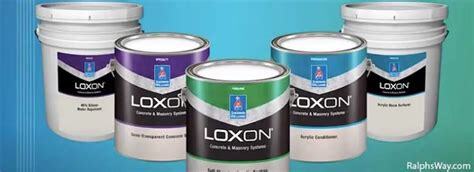Understanding Elastomeric Paint for Stucco Surfaces

Key Highlights:
- Superior Coverage: Achieves rich color and opacity in fewer coats, saving time and money on large projects.
- Exceptional Waterproofing: Forms a waterproof barrier, effectively protecting against moisture.
- Resistance to Extreme Weather: Designed to withstand wind-driven rain, protecting buildings in harsh climates.
- Crack Bridging: Fills and bridges hairline cracks, preventing water damage and extending the surface's life.
Can you paint stucco?
Absolutely, you can paint stucco! Painting stucco not only enhances curb appeal but also extends the surface's life by adding a protective barrier against weather. The key to success is choosing the right product—elastomeric paint is often the top choice for stucco surfaces. This article explores the benefits and challenges of painting stucco, how elastomeric paint can make a difference, and tips for a flawless finish.
What Makes Elastomeric Paint the Best Choice for Stucco?
What is Elastomeric Paint?
Elastomeric paint is a highly durable exterior coating specifically designed for masonry surfaces like stucco. This paint is thicker and more flexible than traditional paints, allowing it to bridge tiny cracks and resist water infiltration. Its rubber-like finish makes it an excellent option for stucco that is prone to cracking.Advantages of Using Elastomeric Paint
- Superior Durability: Elastomeric paint can last up to 10 years or more, significantly outlasting standard exterior paints.
- Waterproofing Properties: It creates a seamless barrier that protects stucco from rain, moisture, and even wind-driven rain.
- Crack Bridging: If your stucco has hairline cracks, elastomeric paint can cover them and prevent further water damage.
- Weather Resistance: It withstands extreme temperatures, UV exposure, and heavy rains, making it perfect for Oregon’s fluctuating weather.
How Does Elastomeric Paint Compare to Traditional Paint?
| Feature | Elastomeric Paint | Traditional Paint |
|---|---|---|
| Durability | Up to 10+ years | 5-7 years |
| Waterproofing | High | Moderate |
| Crack Bridging | Excellent | Limited |
| Application | Requires skilled application | Easier to apply |
| Cost | Higher upfront cost | More affordable initially |
How to Prepare Stucco for Elastomeric Paint
Proper preparation is key to achieving the best results. Here are the essential steps:
- Clean the Surface
Use a pressure washer or scrub brush to remove dirt, dust, and any loose stucco. A clean surface ensures better adhesion. - Repair Cracks and Damaged Areas
For larger cracks or deteriorated stucco, use a masonry filler. Elastomeric paint can bridge minor cracks, but serious damage should be addressed beforehand. - Apply a Primer (Optional but Recommended)
Using a masonry primer ensures the elastomeric paint bonds securely to the surface, especially if the stucco is older or heavily textured.
Can You Paint Stucco Yourself, or Should You Hire a Pro?
While DIY painting can be satisfying, elastomeric paint requires precise application for optimal results. Professionals like those at Lightmen Painting have the tools and expertise to ensure even coverage and avoid peeling or bubbling. Multiple thin coats are often needed to prevent drips due to the paint’s thick consistency.
Things to Know
- Professional Application Required: Elastomeric paint needs precise application to avoid peeling or uneven finishes.
- Ideal for Harsh Climates: It offers superior weather resistance, making it perfect for homes in windy or rainy areas.
- Bridges Hairline Cracks: Its thickness and flexibility allow it to cover small cracks, preventing further damage.
- Higher Initial Cost: Elastomeric paint is more expensive but saves money in the long run by reducing maintenance needs.
- Not Always Necessary: If waterproofing isn’t a priority, traditional exterior paint with a masonry primer may suffice.
What Are the Potential Challenges with Elastomeric Paint?
Skilled Application Needed
Elastomeric paint isn’t the easiest to apply. Without the right technique, you could end up with uneven surfaces or trapped moisture. Professional application ensures the paint adheres properly and performs as expected.
Higher Cost
Expect elastomeric paint to be more expensive than traditional exterior paint. However, its long-term durability often makes it a cost-effective investment.
Surface Preparation Is Critical
The surface must be meticulously cleaned and primed, especially if the stucco has old paint or stains.
How Does Elastomeric Paint Handle Oregon’s Weather?
In Oregon’s wet and windy conditions, elastomeric paint excels. Its waterproofing capabilities prevent moisture from penetrating the stucco, which helps reduce cracking and mold growth. If your property is in an area prone to heavy rain, like Portland or the coastal regions, elastomeric paint offers invaluable protection.
How to Maintain Painted Stucco
Even with the best paint, regular maintenance keeps your stucco looking fresh.
- Routine Cleaning: Use a garden hose or pressure washer to remove dust and dirt.
- Annual Inspections: Check for new cracks or areas that need touch-ups, especially after harsh winters.
- Repaint When Needed: Though elastomeric paint can last a decade, performing occasional touch-ups ensures long-lasting beauty.
In Our Experience
“Elastomeric paint like Sherwin-Williams Loxon is a top performer. We’ve used it extensively on both residential and commercial projects, and it never fails to impress. Its ability to fill small cracks while providing waterproofing makes it perfect for Portland’s rainy climate. When properly applied, Loxon offers long-term durability that’s worth every penny.”
Is Elastomeric Paint Always the Best Option?
While elastomeric paint is excellent for most stucco surfaces, it may not always be necessary. If your stucco is in good condition and you’re more concerned with aesthetics than waterproofing, high-quality masonry paint might suffice.
If moisture is a concern, or if you live in an area with extreme weather, elastomeric paint is worth the investment. Consult with experts like those at Sherwin-Williams or Lightmen Painting to determine the best solution for your home.
Final Thoughts: Is Painting Stucco Worth It?
Painting stucco with elastomeric paint provides enhanced durability, weather resistance, and a refreshed appearance. While the upfront cost is higher, the long-term benefits—fewer repairs, waterproof protection, and extended paint life—make it a wise choice. Whether you tackle it yourself or hire a professional, painting stucco ensures your property looks great and stands up to the elements.
Do You Have Questions? Give Us A Call With Any & All! 503-389-5758
-
People Also Ask:
Can elastomeric paint be used on all exterior surfaces?
Elastomeric paint is specially formulated for masonry surfaces such as stucco, concrete, and brick. Its elasticity and durability make it ideal for these materials, offering superior protection against moisture and weather conditions. However, it may not be suitable for all exterior surfaces, especially those that are not masonry-based, without proper preparation and application techniques.
How does elastomeric paint compare to traditional exterior paint in terms of cost and application?
Elastomeric paint tends to be more expensive than traditional exterior paint due to its specialized formulation and the benefits it offers, such as exceptional waterproofing and crack-bridging abilities. The application process for elastomeric paint is also more demanding, requiring professional expertise to ensure even coverage and to avoid potential issues like peeling or blistering.
What are the maintenance requirements for elastomeric paint?
Maintaining an elastomeric paint coating involves regular cleaning to remove dirt and debris, which can be done with gentle washing. Additionally, periodic inspections should be conducted to identify any signs of wear or damage. Proper maintenance can significantly extend the life and performance of elastomeric paint, often beyond its warranty period.
-
SUBSCRIBE TO OUR BLOG: Stay informed with the latest in Painting and DIY projects by subscribing to Lightmen Painting. Get insights, tips, and more delivered straight to your inbox. We would also love to know what you would like to read about, leave thoughts on where we should go next. Interests, Topics, Ideas, all are welcome.
Get $3000 in personal assistant credits from Magic .com
^ Click Our Logo Above To Redeem ^
If your in the Portland, Or. area and need advice or a free no obligation estimate call us at 503-389-5758 or email scheduling@lightmenpainting.com
Shout Out:
MoneySavingExpert Forum - Community Insights for Kitchen Painting
We love seeing communities like MoneySavingExpert discuss helpful tips on kitchen cabinet painting. If you're unsure about which type of paint to use, this forum is a great place to find recommendations and advice from real homeowners. At Lightmen Painting, we believe in making informed choices for the best results. Join the conversation at MoneySavingExpert.
Thanks for stopping by Lightmen Daily! Stay tuned for more practical tips and expert advice on making your painting projects flawless, from wall to floor!
Definitions
- Superior Coverage: Achieves rich color and opacity in fewer coats, saving time and money on large projects.
- Exceptional Waterproofing: Forms a waterproof barrier, effectively protecting against moisture.
- Resistance to Extreme Weather: Designed to withstand wind-driven rain, protecting buildings in harsh climates.
- Crack Bridging: Fills and bridges hairline cracks, preventing water damage and extending the surface's life.
- Elastomeric Paint: A superior type of exterior paint offering exceptional durability and protection, especially beneficial for masonry surfaces like stucco.
- Benefits of Elastomeric Paint:
- Superior Coverage and Hide: Achieves desired opacity and color richness in fewer coats.
- Exceptional Waterproofing: Forms a waterproof barrier, protecting against moisture infiltration.
- Wind-Driven Rain Resistance: Withstands harsh weather, protecting the exterior from water damage and erosion.
- Bridging Hairline Cracks: Prevents water entry and further damage by filling small cracks.
- Drawbacks of Elastomeric Paint:
- Cost: Generally more expensive than traditional paint due to its specialized formulation.
- Application Challenges: Requires skilled professionals to avoid issues like peeling or inadequate coverage.
- Product Descriptions: Can lack clarity, making it crucial to choose reputable brands and seek comprehensive product details.
- Potential Considerations:
- Existing Paint Condition: Assess if switching to elastomeric paint is necessary if the existing coating is in good condition.
- Waterproofing Needs: Evaluate if waterproofing is a primary concern for the project.
- Multiple Coats on Stucco: Consider the condition and layers of paint on stucco before applying elastomeric paint.
- Loxon XP: A line of elastomeric paint by Sherwin-Williams, recommended for filling small cracks and providing robust protection for masonry surfaces.Maintenance of Elastomeric Paint:
- Routine Cleaning: Regular cleaning to remove dirt and debris.
- Periodic Inspections: Regular checks for signs of damage or wear.
- Proper Maintenance: Extends the paint's effectiveness beyond its warranty period.
Lightmen Painting Serving: Portland, Tigard, Lake Oswego, Tualatin, West Linn, Milwaukie, Sherwood, Happy Valley, Oregon City, Beaverton, Hillsboro, Gresham

